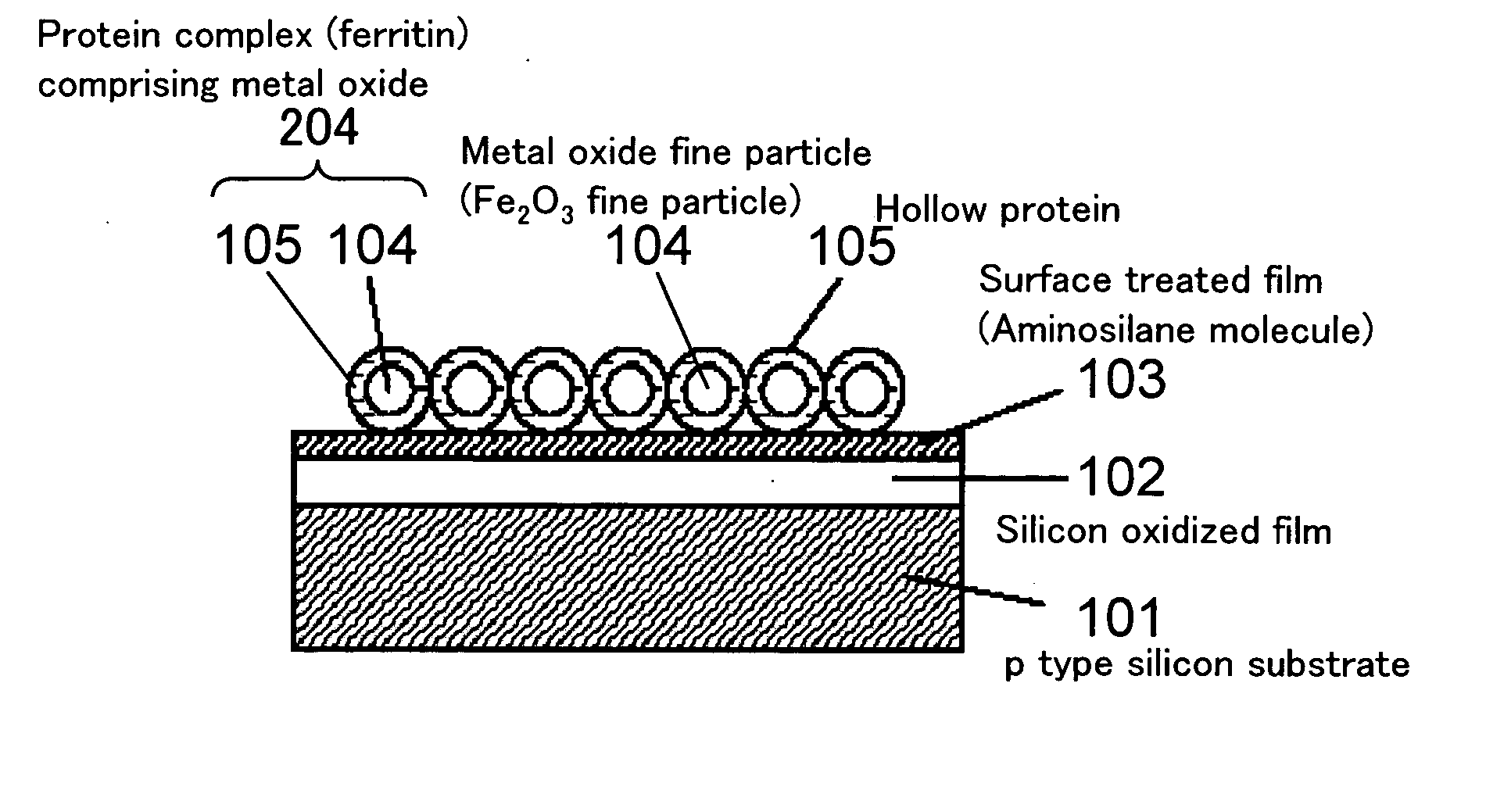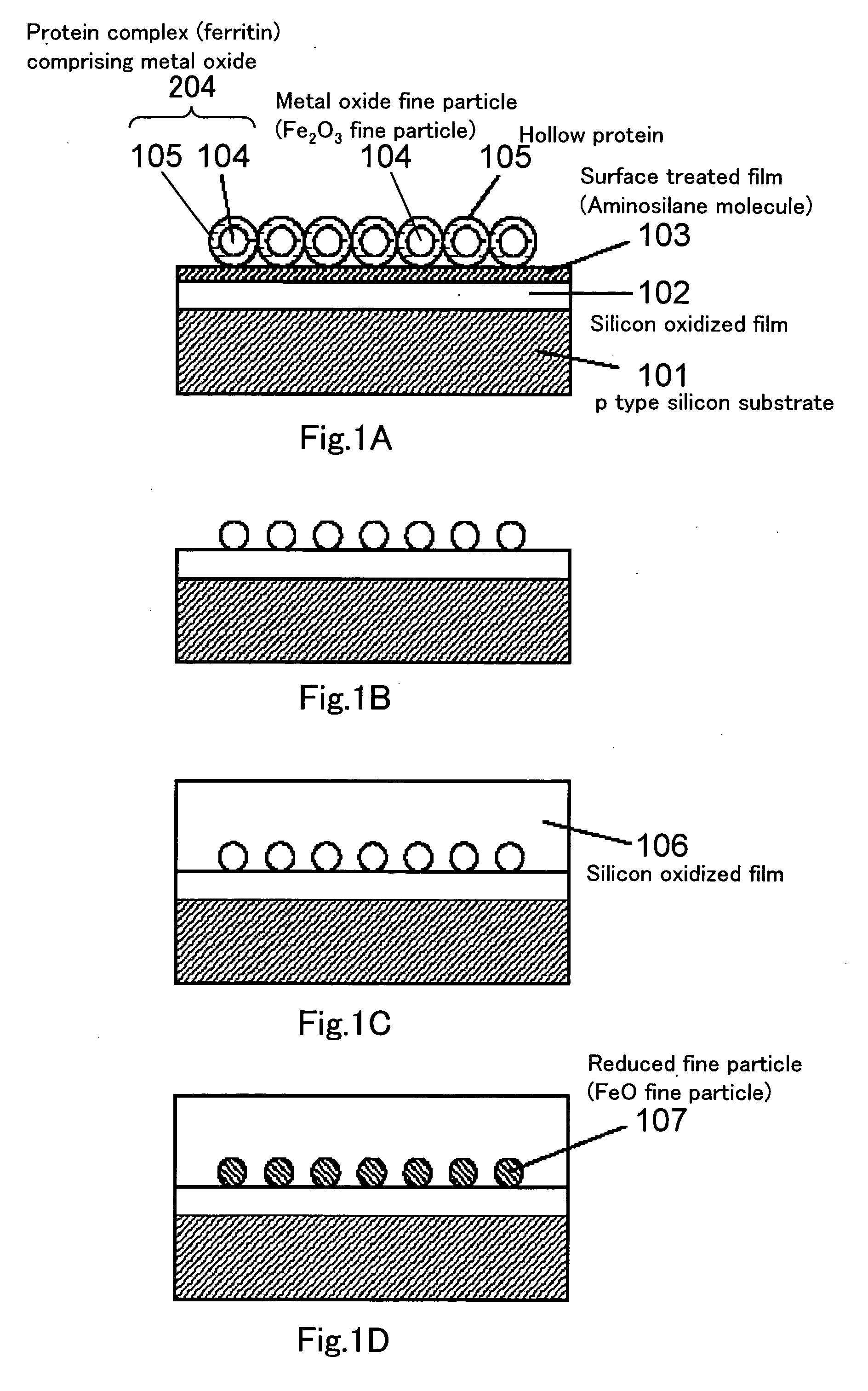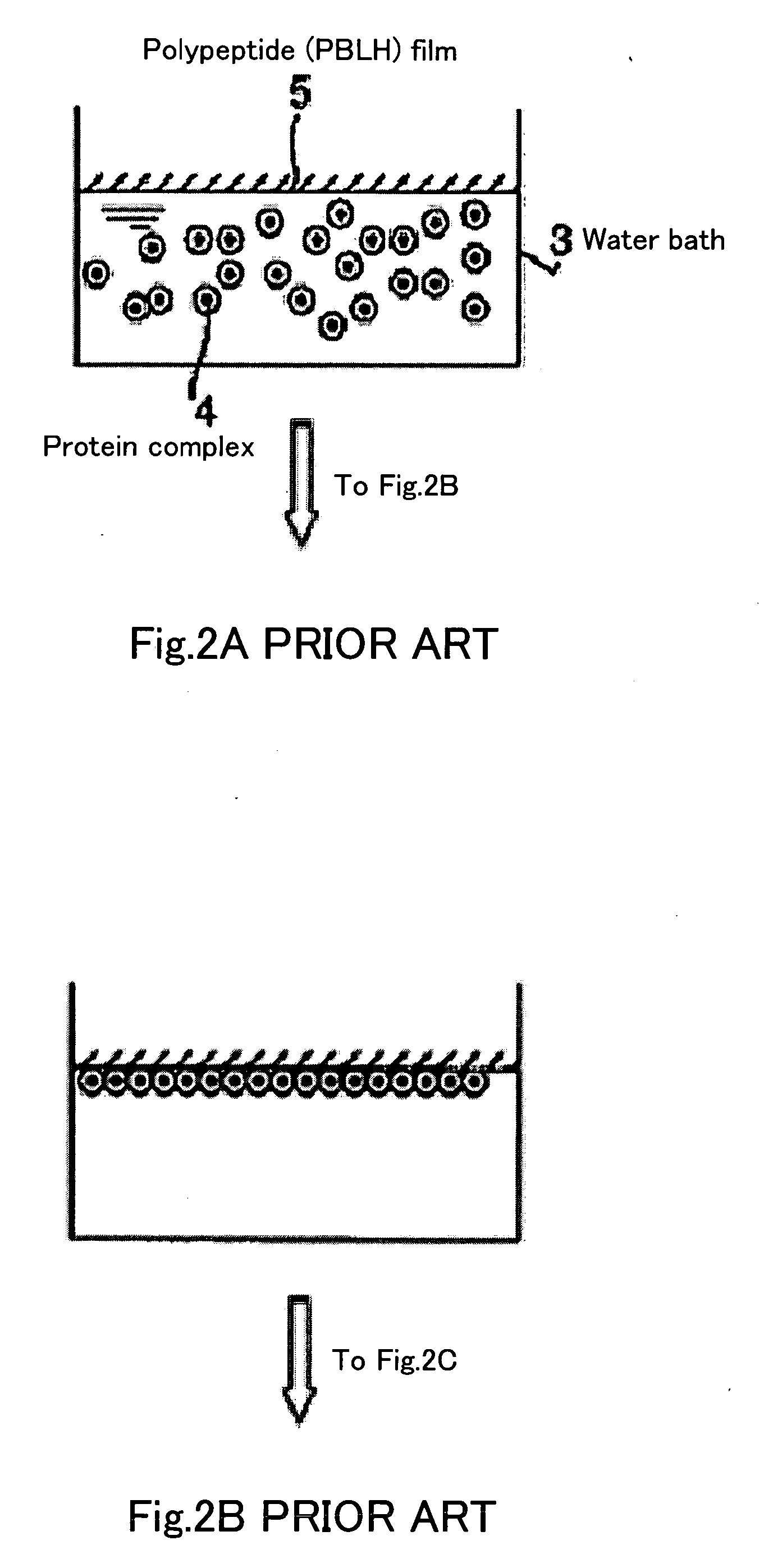Method of forming fine particle array on substrate and semiconductor element
a technology of fine particles and substrates, applied in nanoinformatics, manufacturing tools, oxygen/ozone/oxide/hydroxide, etc., can solve problems such as difficulties in fulfilling a desired function, and achieve the effect of suppressing the reoxidation of reduced fine particles
- Summary
- Abstract
- Description
- Claims
- Application Information
AI Technical Summary
Benefits of technology
Problems solved by technology
Method used
Image
Examples
embodiment 1
[0043] A method of forming a fine particle array on a substrate according to Embodiment 1 of the present invention comprises, as shown in FIG. 1A to FIG. 1D, a step A of fixing metal oxide fine particles 104 and protein complexes (protein complex) 204 comprising a hollow protein 105, which includes the metal oxide fine particle 104 therein, on a substrate 101, a step B of removing the hollow protein 105 while leaving the metal oxide fine particles 104 on the substrate 101, a step C of laminating an insulating layer 106 to give a film thickness of 3 nm or greater and 100 nm or less, which is hardly reduced compared to the metal oxide fine particles 104, on the substrate 101 on which the metal oxide fine particles 104 were disposed, and a step D of reducing the metal oxide fine particles 104 by subjecting the substrate 101, on which the insulating layer 106 was laminated in the step C, to a heat treatment in a reducing atmosphere to yield reduced fine particles 107.
[0044] According t...
embodiment 2
[0084] In this Embodiment 2, one example of the method of forming a fine particle array in which a silicon nitride is used as an insulator will be illustrated.
[0085] In FIG. 6, cross sectional structure of the substrate produced in this Embodiment is shown. First, a p type silicon substrate 101 is washed to remove naturally oxidized film. Thereafter, a silicon thermally-oxidized film 102 having a film thickness of 3 nm was formed on the surface at 800° C. with a rapid thermal oxidation (RTO) method.
[0086] Next, thus produced substrate was subjected to a UV ozone treatment, and the contaminants (organic compounds and the like) adsorbed on the surface were removed to obtain a clean surface. In the UV ozone treatment, the substrate is exposed into an atmosphere of a mixture of ozone and oxygen under an ultraviolet irradiating condition to oxidize and remove the organic compound molecules. In this Embodiment, the treatment was conducted at 110° C. for 10 min. Because the substrate sur...
embodiment 3
[0100] This Embodiment 3 illustrates one example of a semiconductor element in which silicon oxide is used as an insulator.
[0101] Also in this Embodiment, a substrate having iron oxide cores embedded into an insulator was produced, and it was subjected to a reduction treatment, in a similar manner to Embodiment 2. However, silicon oxide (SiO2) was used instead of silicon nitride as an insulating layer into which the cores are embedded. Cross sectional structural drawing of the semiconductor element of this Embodiment is shown in FIG. 9.
[0102] Onto a substrate having iron oxide cores produced according to similar steps of Embodiment 1 was deposited a SiO2 insulating layer 106 by plasma CVD. In this step, deposition was carried out using a monosilane (SiH4) gas and a nitrous oxide (N2O) gas as sources of plasma CVD, and a nitrogen gas as a carrier, at a substrate temperature of 400° C., with RF power of 50 W for 60 sec. As a result, a SiO2 insulating layer 106 having a film thicknes...
PUM
| Property | Measurement | Unit |
|---|---|---|
| thickness | aaaaa | aaaaa |
| thickness | aaaaa | aaaaa |
| temperature | aaaaa | aaaaa |
Abstract
Description
Claims
Application Information
 Login to View More
Login to View More - R&D
- Intellectual Property
- Life Sciences
- Materials
- Tech Scout
- Unparalleled Data Quality
- Higher Quality Content
- 60% Fewer Hallucinations
Browse by: Latest US Patents, China's latest patents, Technical Efficacy Thesaurus, Application Domain, Technology Topic, Popular Technical Reports.
© 2025 PatSnap. All rights reserved.Legal|Privacy policy|Modern Slavery Act Transparency Statement|Sitemap|About US| Contact US: help@patsnap.com



